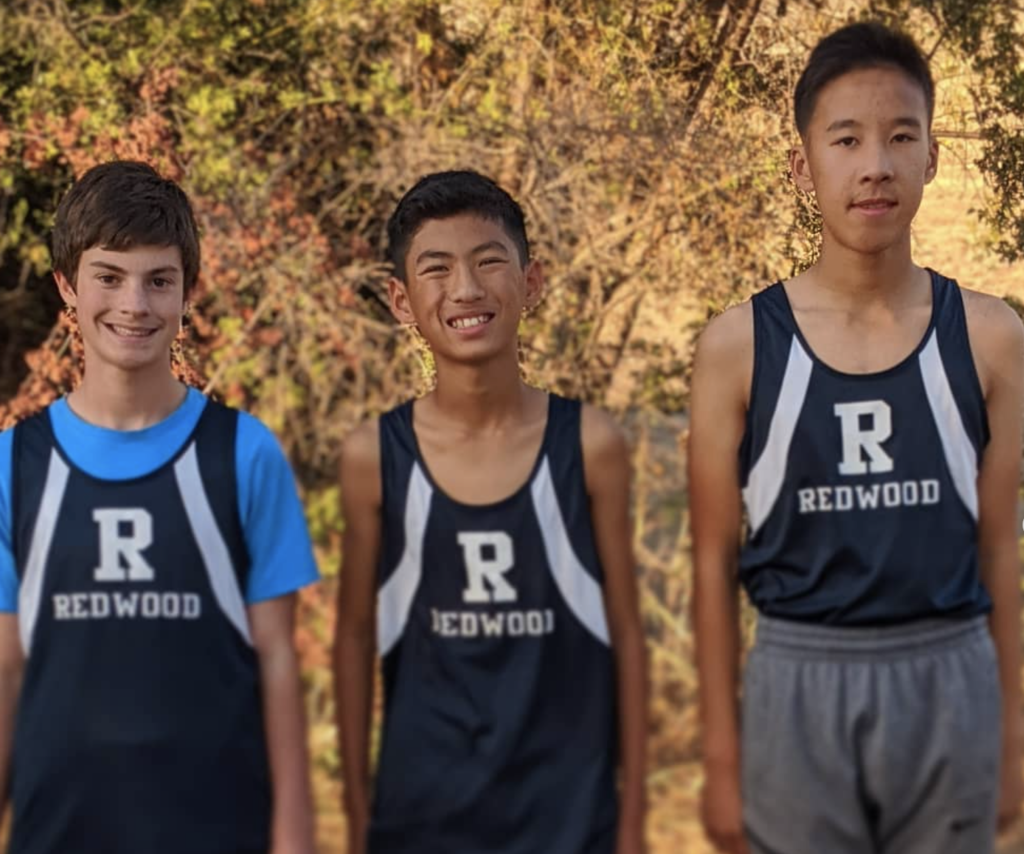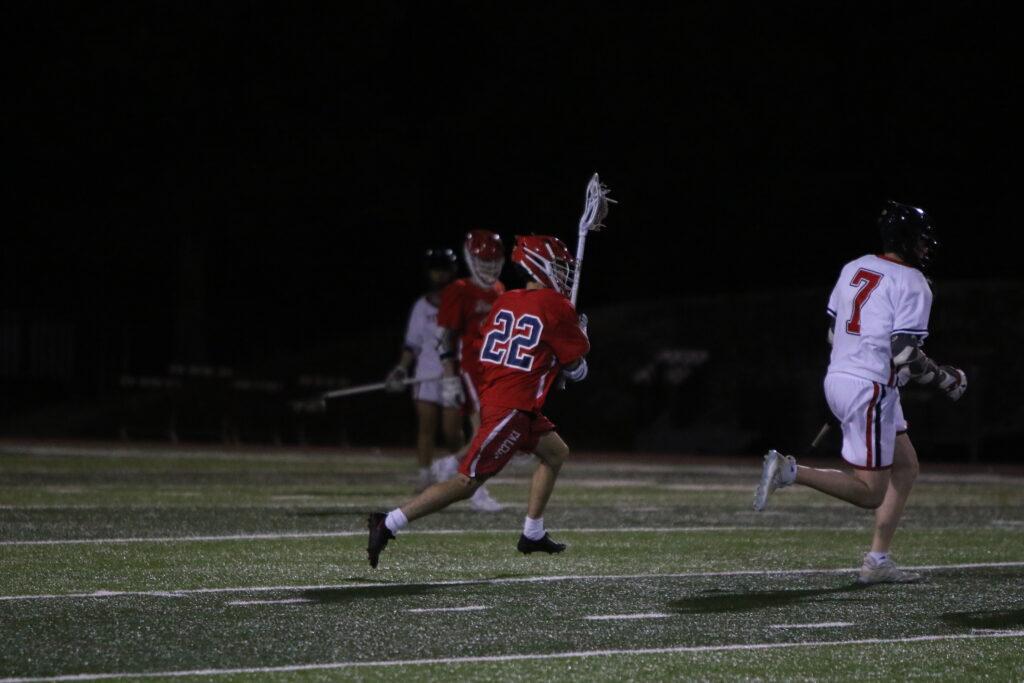As a young child in elementary school, I was never quite fond of my athletic capabilities, causing me to never expect to pursue any athletic endeavors in the future. Having mild asthma and struggling in PE in elementary school made me feel this way — I could barely muster a few pushups. I was arguably even worse at running.
In elementary school PE class, we typically did the FitnessGram Pacer Test, where we would run 50 feet back and forth along a basketball court. Every 50 feet run a runner completes adds one to their score. I remember once scoring a 10 on my FitnessGram Pacer Test in 4th grade.
As elementary school came to a close, though, I noticeably got better at running, scoring a personal best of 55 on my Pacer Test in 5h grade. Additionally, I began playing competitive basketball in sixth grade after joining an Amateur Athletic Union (AAU) team. Running up and down the court helped me further develop endurance.
Soon, I was able to start beating most of my classmates in endurance competitions. For the first mile time trial in my 7th grade physical education class at Redwood Middle School, I ran a new personal record of 6:51, beating everyone in my class and shocking myself.
Feeling pride in my running capabilities, I decided to join the cross country team that year. On the first day of practice, we did a mile time trial and I ran the fastest, clocking in at 6:35 this time, a 16-second improvement.
I used the momentum from my quick improvements to qualify for the Silicon Valley Cross Country Championships. Even though I only placed 52nd out of 89 7th grade boys, I knew I was extremely new to the sport and.
Fast forward to the track season of 7th grade, which started the week after spring break, I began showing an even faster line of progression. I ran the 800 and 1,600 meters and I went from 2:41 to 2:30 in the 800 and 5:52 to 5:31 in the 1,600. Shockingly, I was able to qualify for the Silicon Valley Track and Field Championships.
Even though I didn’t place well at more prestigious meets, I realized that if I wanted to get better, I needed to train specifically for long-distance running, as many of the faster middle schoolers have been training for several years.
My parents were even kind enough to help me start working with a private coach. Doing 400-meter repeats and strength training exercises such as push-ups at the Benny Pierce Stadium was tough, but I knew if I could withstand these workouts, I would become a better runner. I did calisthenics for strength training and short interval workouts such as 3 repetitions of 400 meter runs.
My training paid off. I once again qualified for the Silicon Valley Cross Country Championships in 8th grade and I placed 39th out of 98 8th grade boys, better than the previous year. Unfortunately, there was no track season for me that year because of the COVID-19 pandemic. However, I did get to see my current fitness shape that spring through a mile time trial in my 8th grade physical education class. I ran a 5:17 mile in P.E. in March, signaling that I was in good shape.
Training during the pandemic shutdown was tough. Restrictions on training and talking with my private coach made improving much more difficult, as it was harder for my coach to give consistent constructive criticism on my technique.
Luckily, finally in February 2021, I was able to start my high school running career with the cross country season. I was able to become the only freshman on the varsity roster and ran 13:16 for the 2.3-mile campus loop the team ran for all of their races.
In track, I was on the cusp of breaking 5 minutes in the 1,600 meters in the second meet of the season, only to fall short, running a time of 5:00.71 — a true heartbreak. I would never run faster that season.
This was the first time I ever hit a wall with progress, motivating me to come back stronger the following cross country season. My summer training, which had a peak weekly mileage of 40, was strict; it consisted of training six days a week, which included four aerobic runs, one tempo run (done at 80-85 % effort), and one hill repetition session.
Despite my strict summer training, I found it difficult to maintain a steady pace in races. Despite my struggles, I was able to salvage a 5,000-meter personal best of 18:17. In track, I would achieve personal records of 4 minutes and 51.59 seconds in the 1600 meters and 11 minutes and 0.99 seconds in the 3200 meters.
My improvement rate was drastically decreasing from year to year, so I modified my offseason training schedule again. I decided to focus on improving my running technique by making sure my arms do not swing too high and my foot cadence increased.
However, improvements were still limited. I would only run 4:47.94 in the 1,600 meters, 2:11.47 in the 800 meters, and 10:54.61 in the 3,200 meters in my junior year.
To my disappointment, the big trend in my high school years was the lack of improvement despite training year-round and being as diligent and dedicated as possible.
As a senior, I have started to dial back on running, instead focusing on college applications and my future. Unfortunately, I have decided not to try to get recruited for running, wanting it to primarily be a hobby that I could go to when I need to de-stress and get exercise moving forward.
What have I learned, from my running experiences from 7th grade to the present? For one thing, I found out what true dedication was like and realized that those who are so successful at what they do put so much time and effort into their endeavors.
Instead of running just in-season, I realized that many serious runners were joining outside clubs, hiring private coaches, making their lifestyle more healthy, training year-round — in short, doing anything they could to get better. With the same aspirations as other serious runners, I made sure to train year-round, create structured and consistent training schedules, eat only healthy foods and sleep as early as possible.
Additionally, I learned to become more patient. Doing 8-mile runs during Saturday nights in the summer took a little bit more than an hour rather than just a few minutes. Building cardiovascular endurance takes years for even serious runners and athletes. I had to be patient and understand that good things take time — they do not just happen overnight, and no outcome is guaranteed.
Not only did I have to be patient, I also had to learn how to do some problem solving. I had to find new and creative ways to run faster, which included building endurance through 40-mile weeks, improving my running ltechnique and building speed through anaerobic interval workouts.
Even though my running journey has sometimes been a challenging experience, I am glad I did it. As a non-athletic child, I would have never imagined myself going so far in a sport. There’s no doubt my elementary school self would be pleasantly surprised by the person running has helped me become.



























